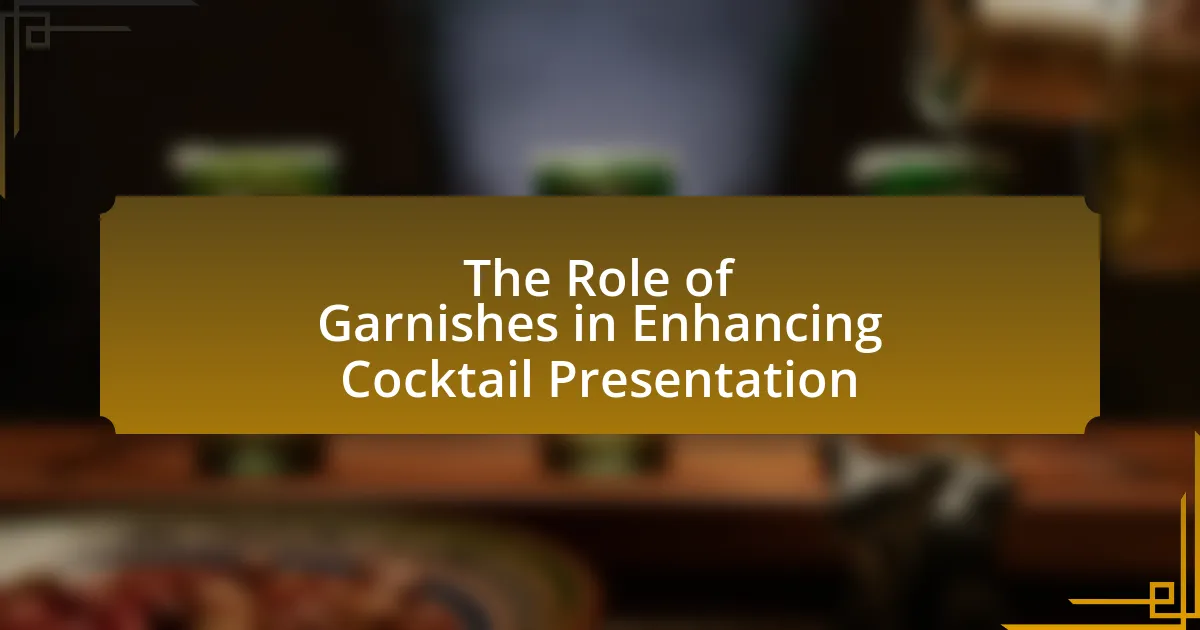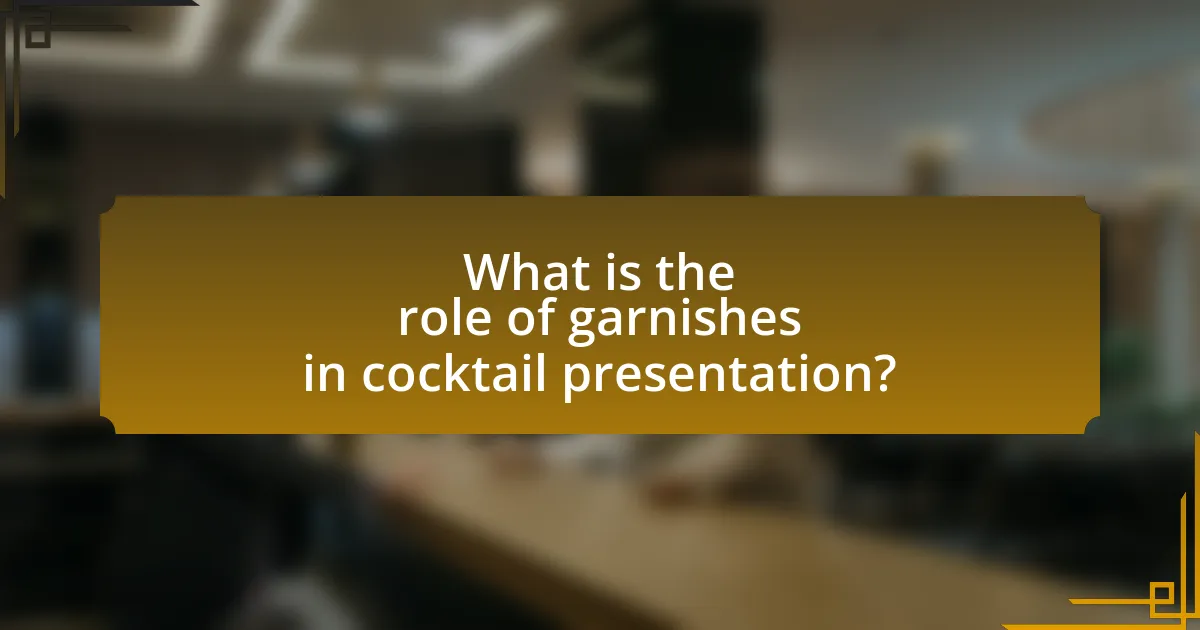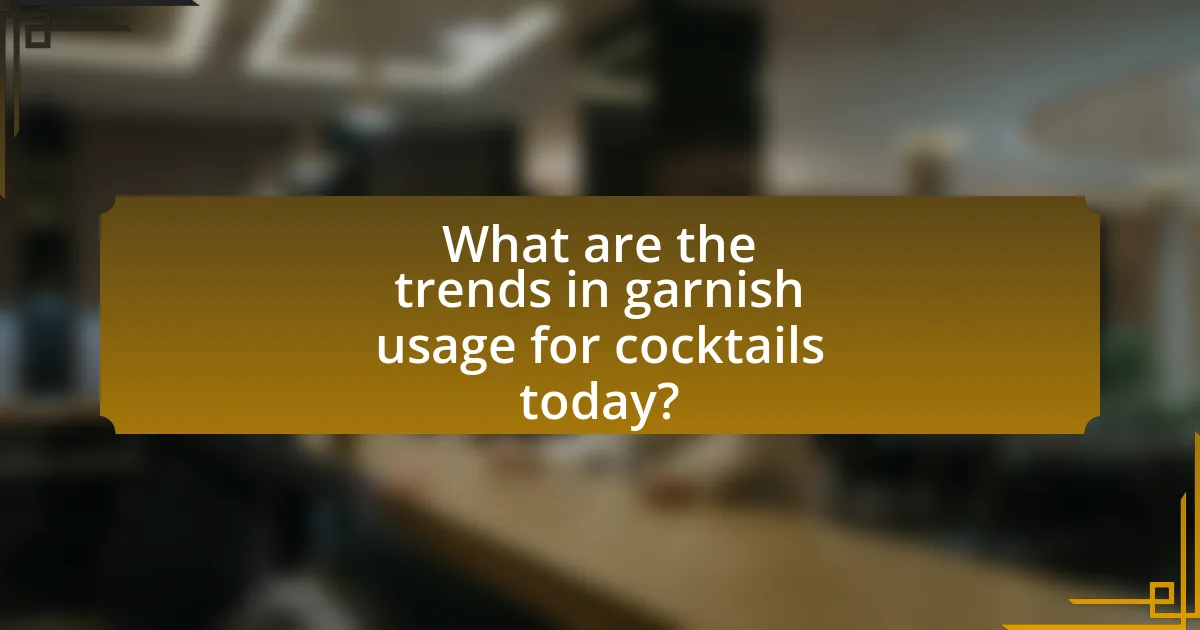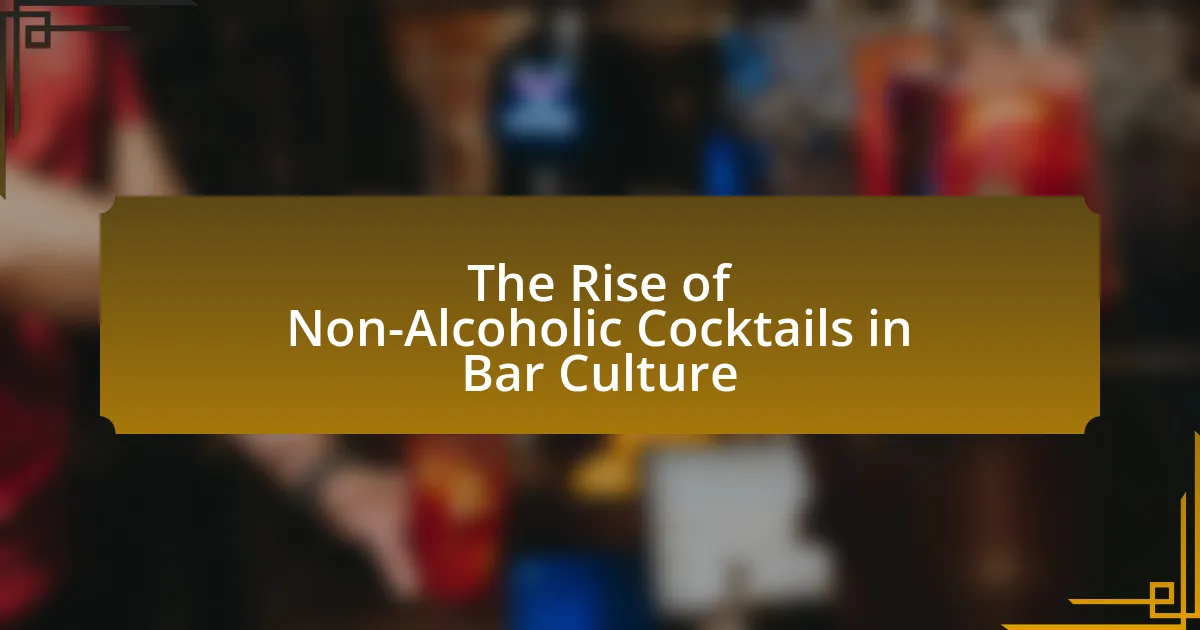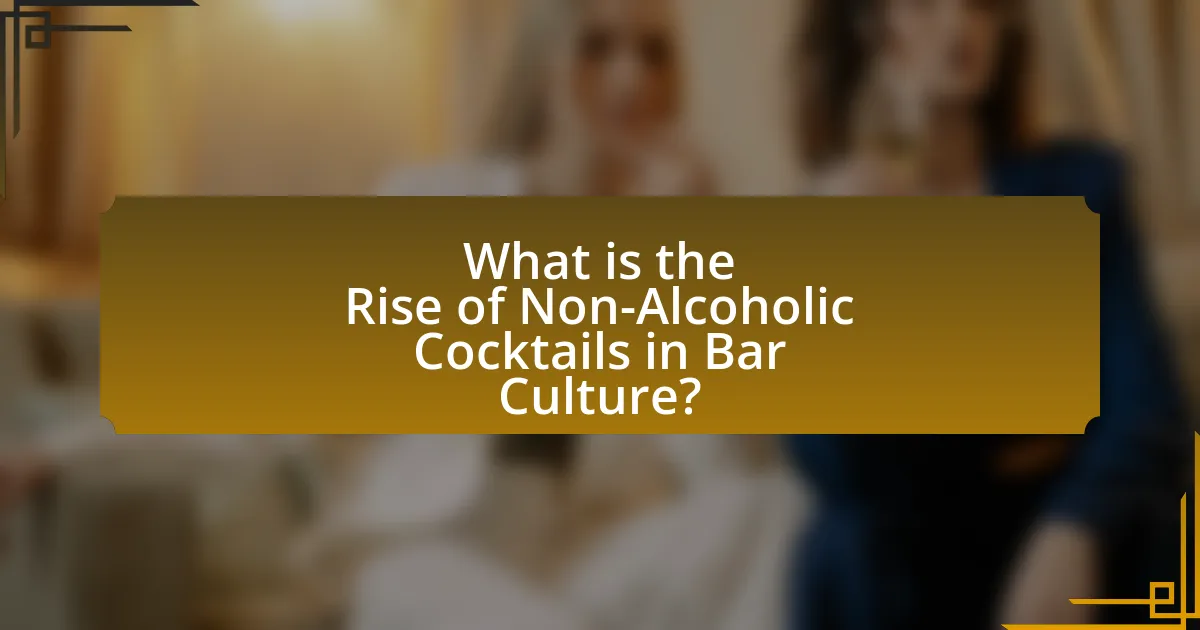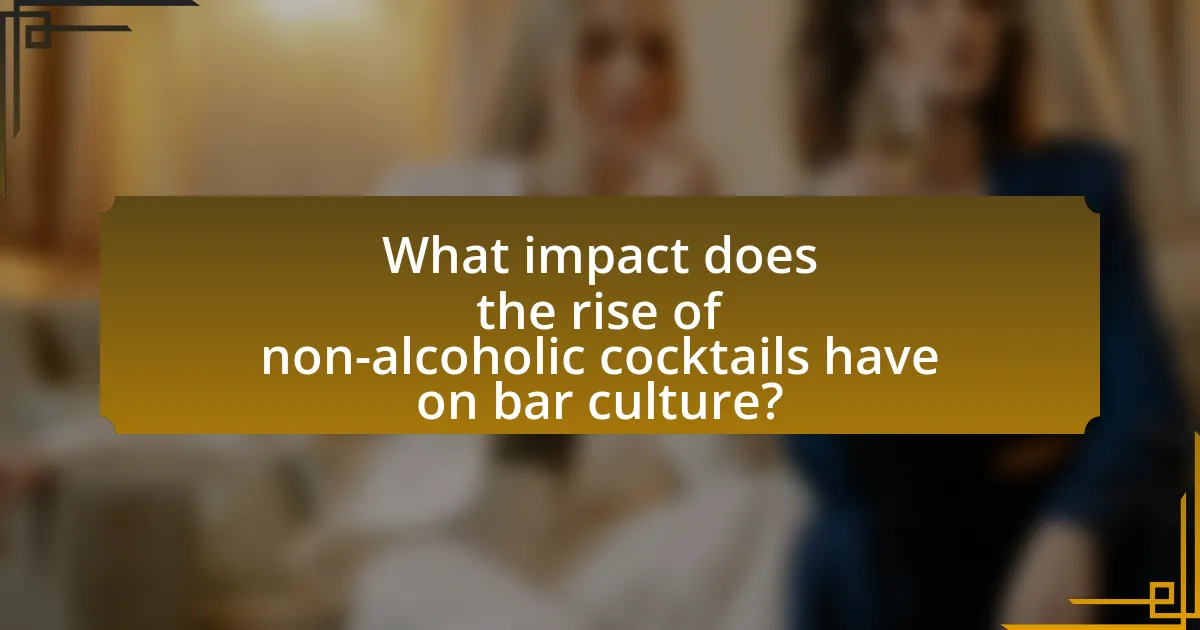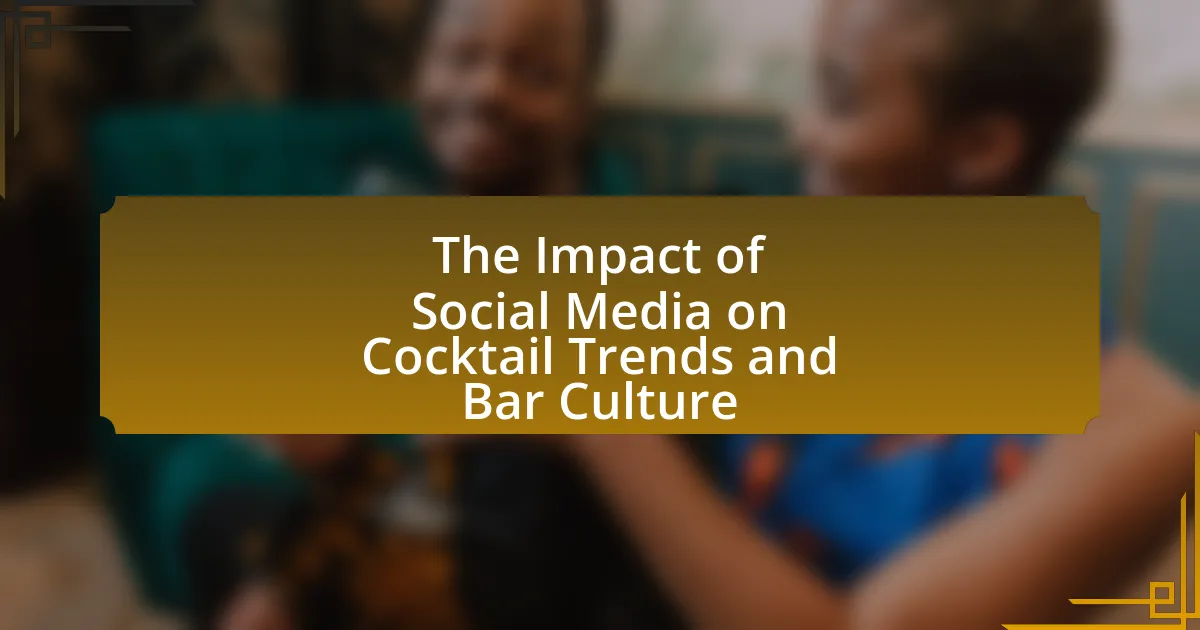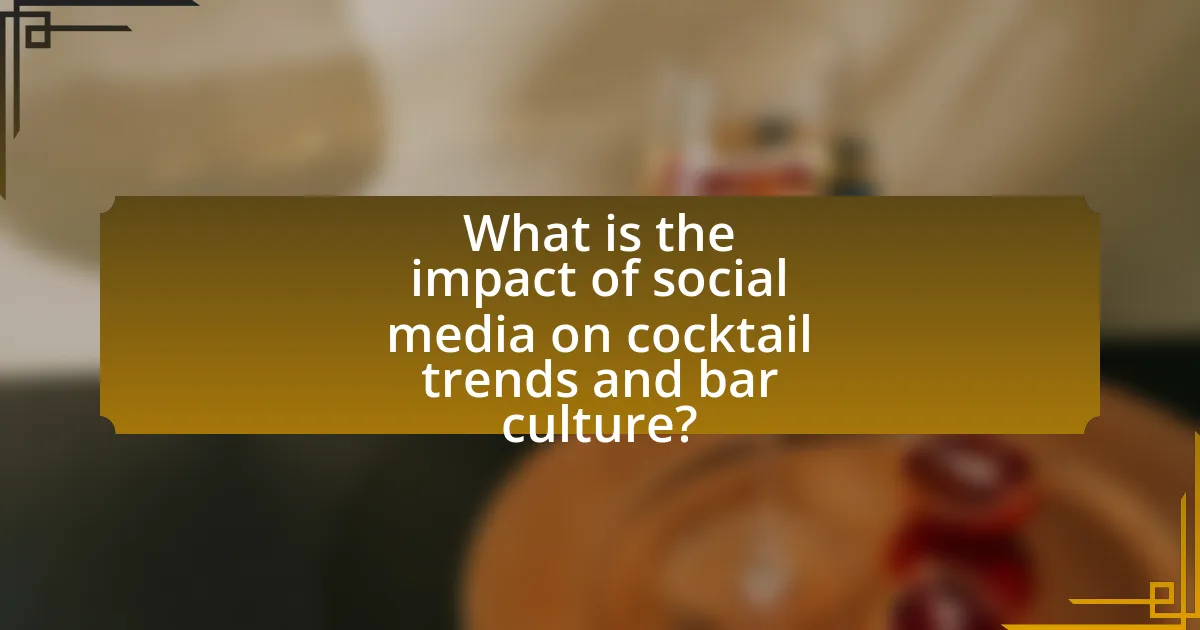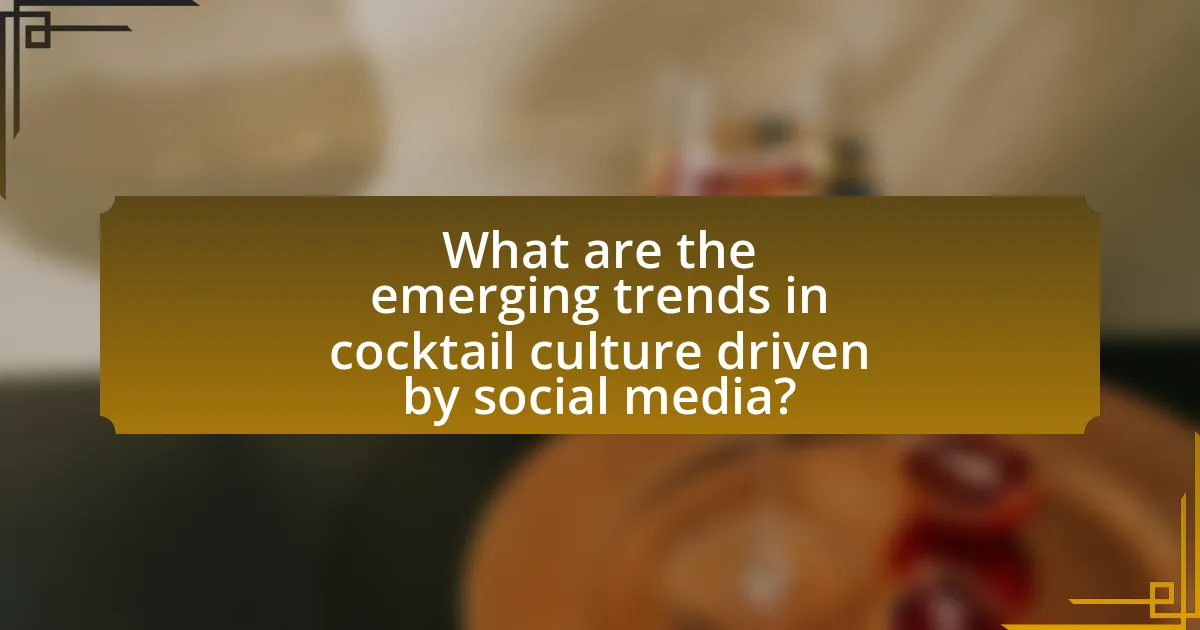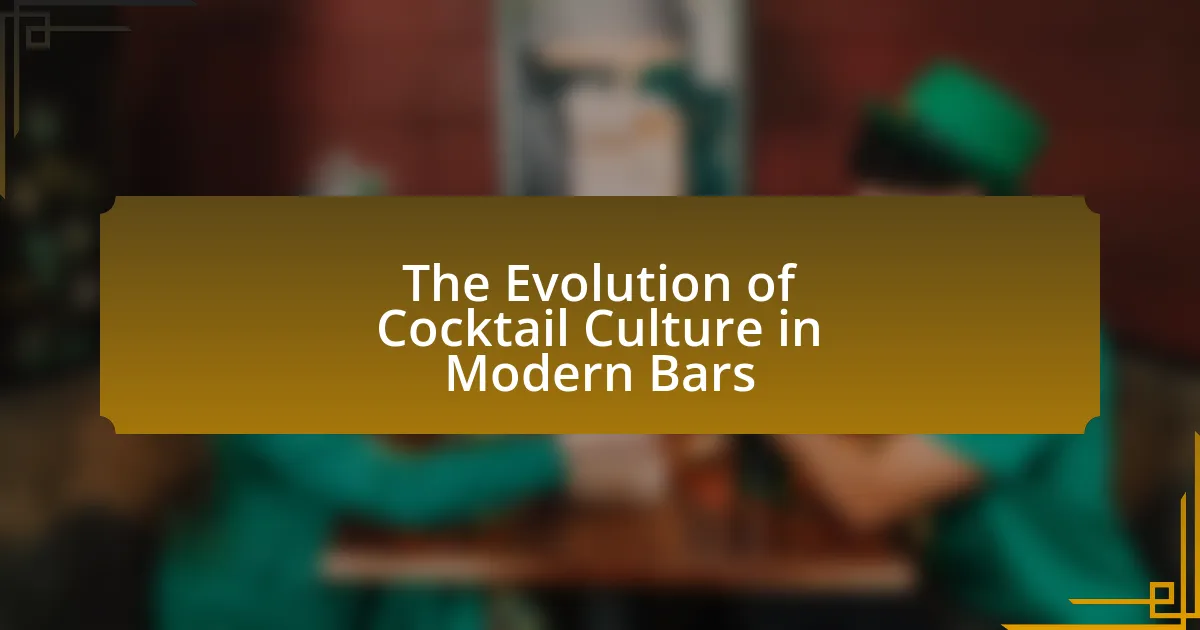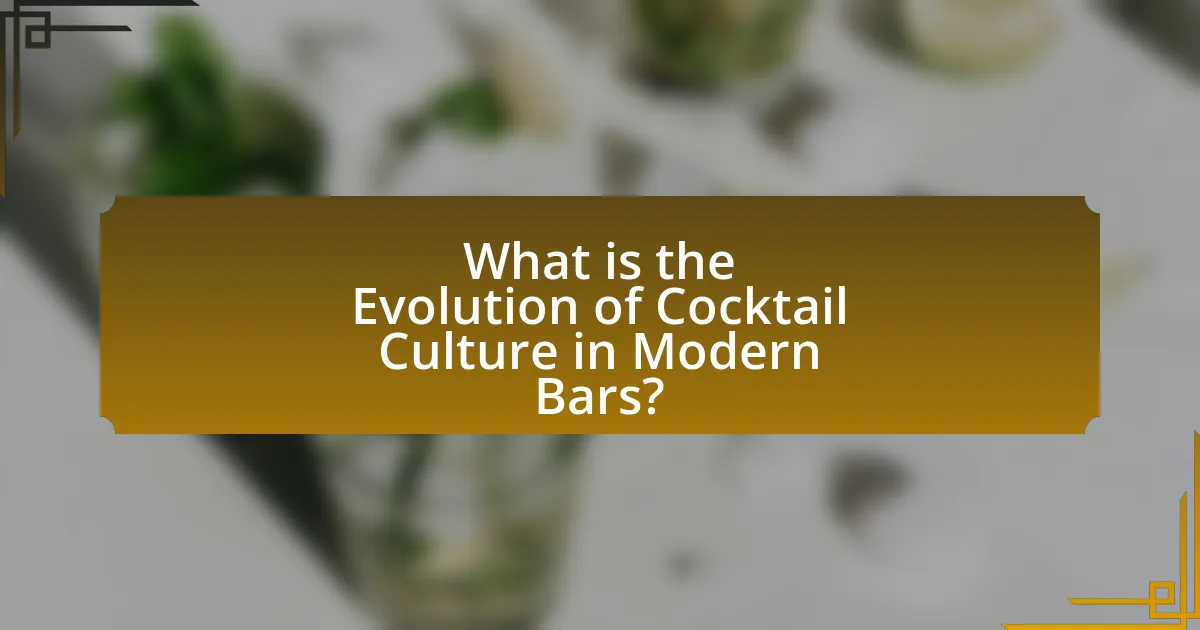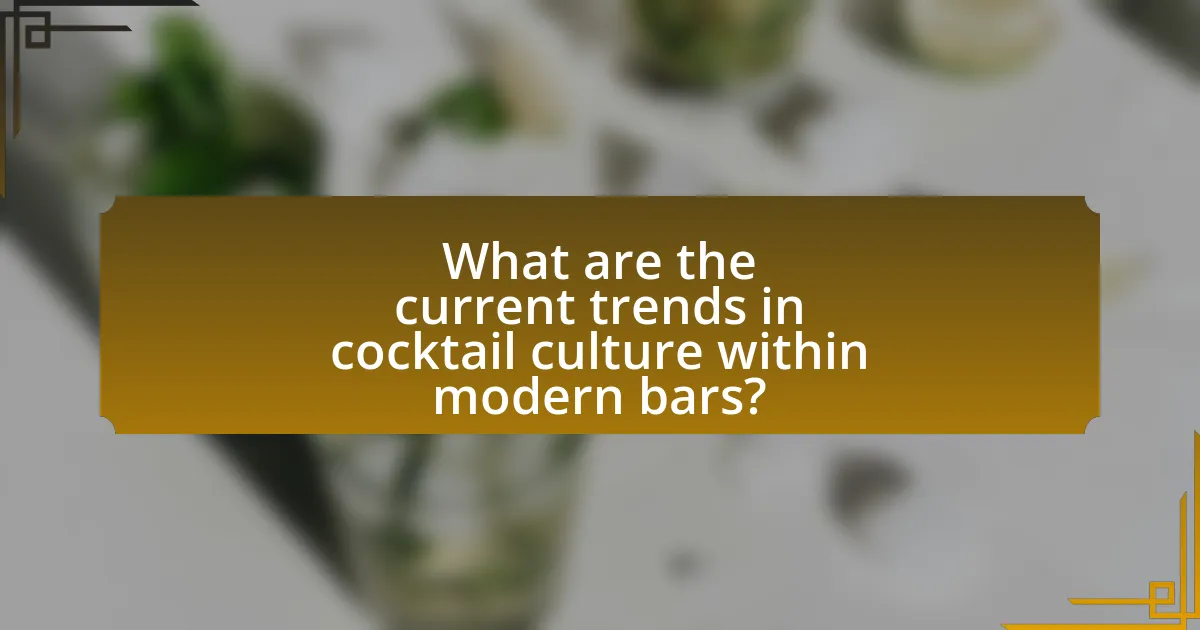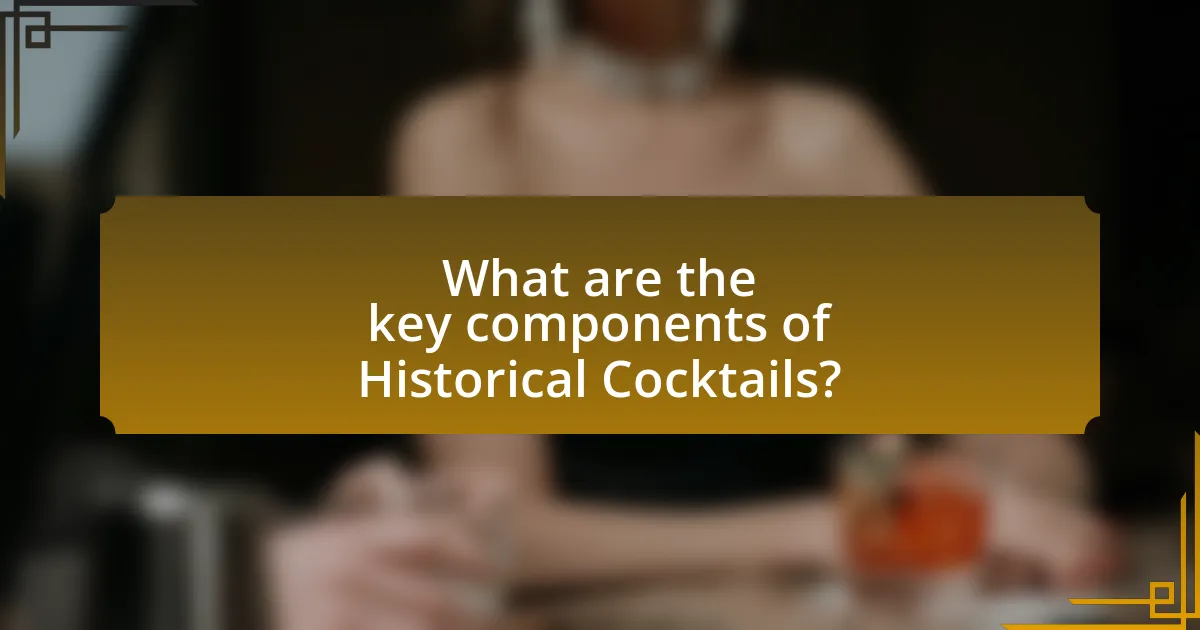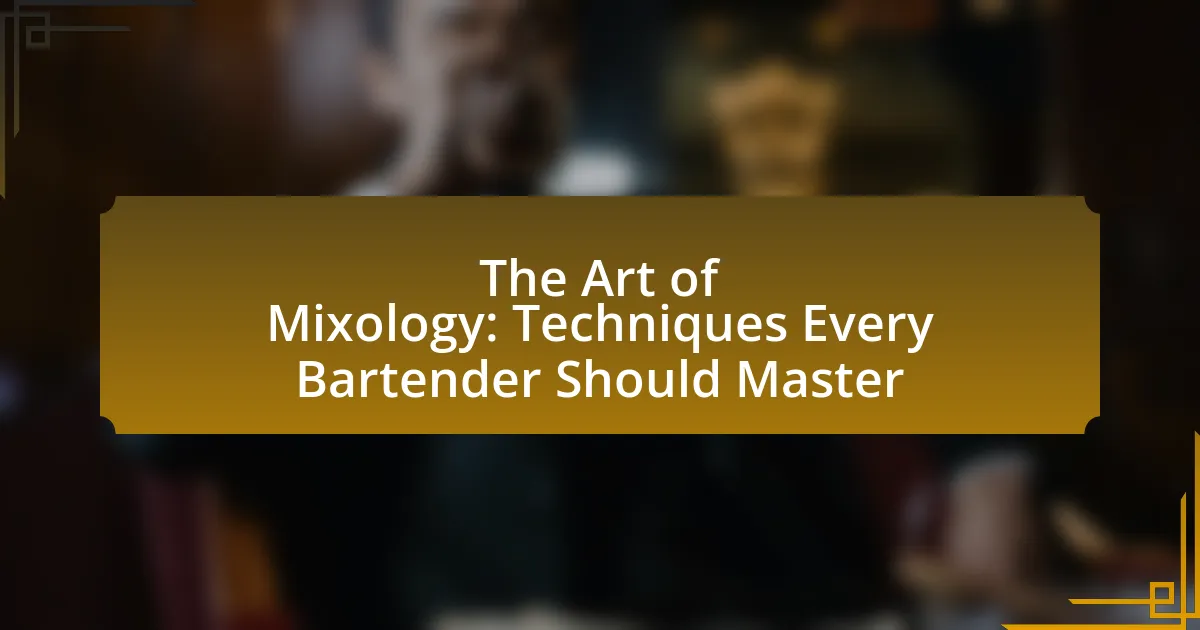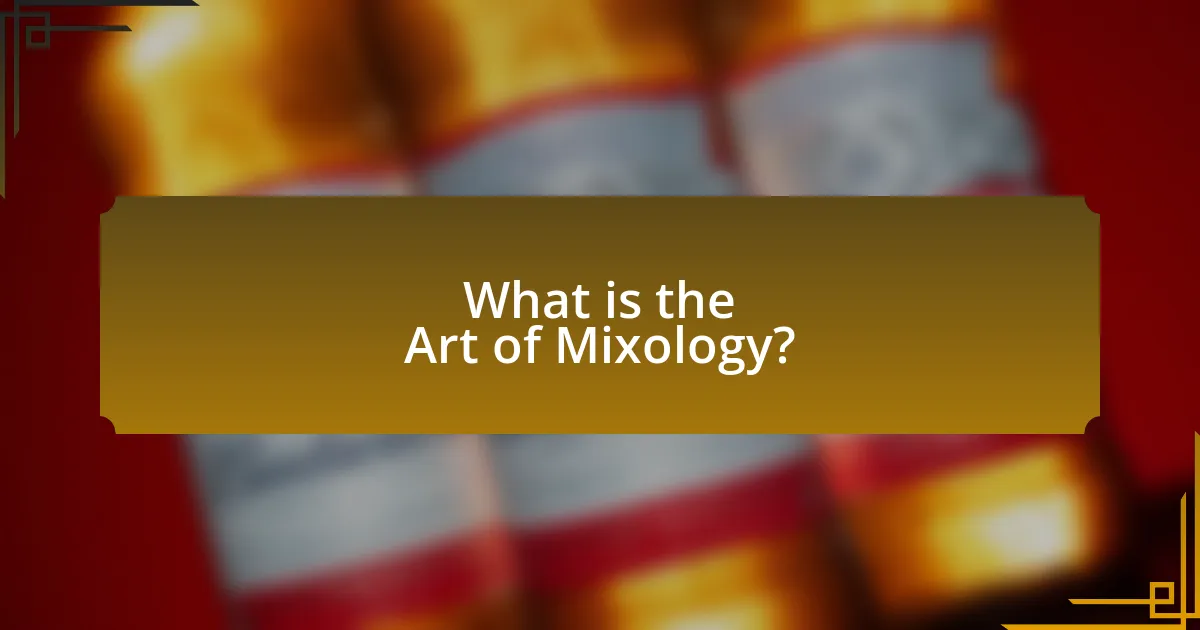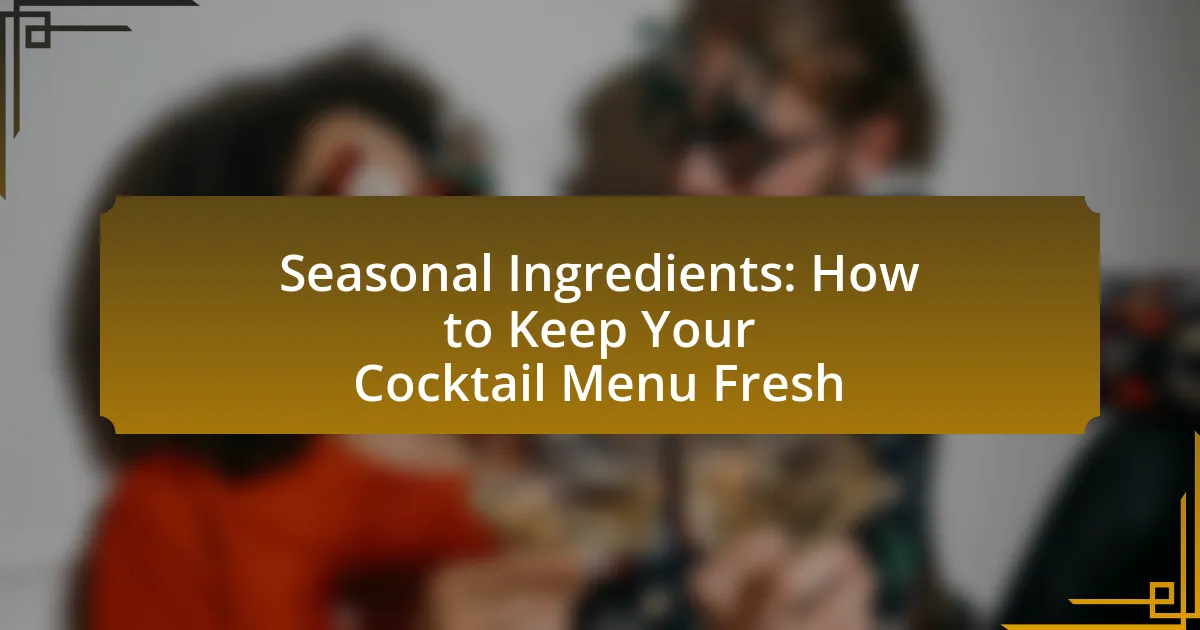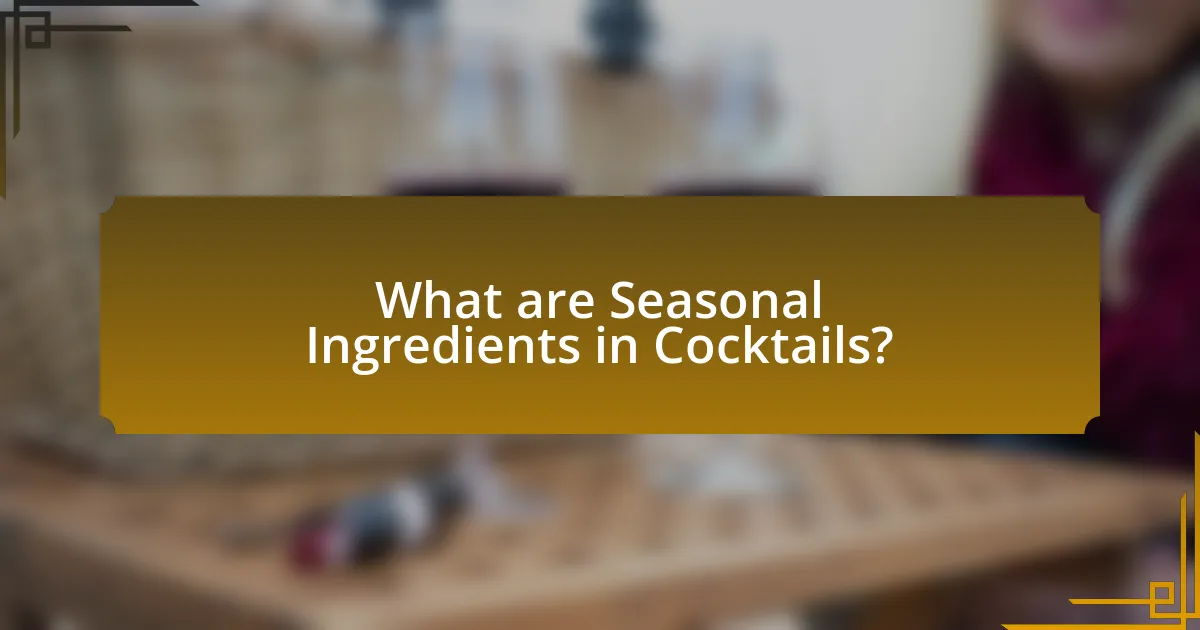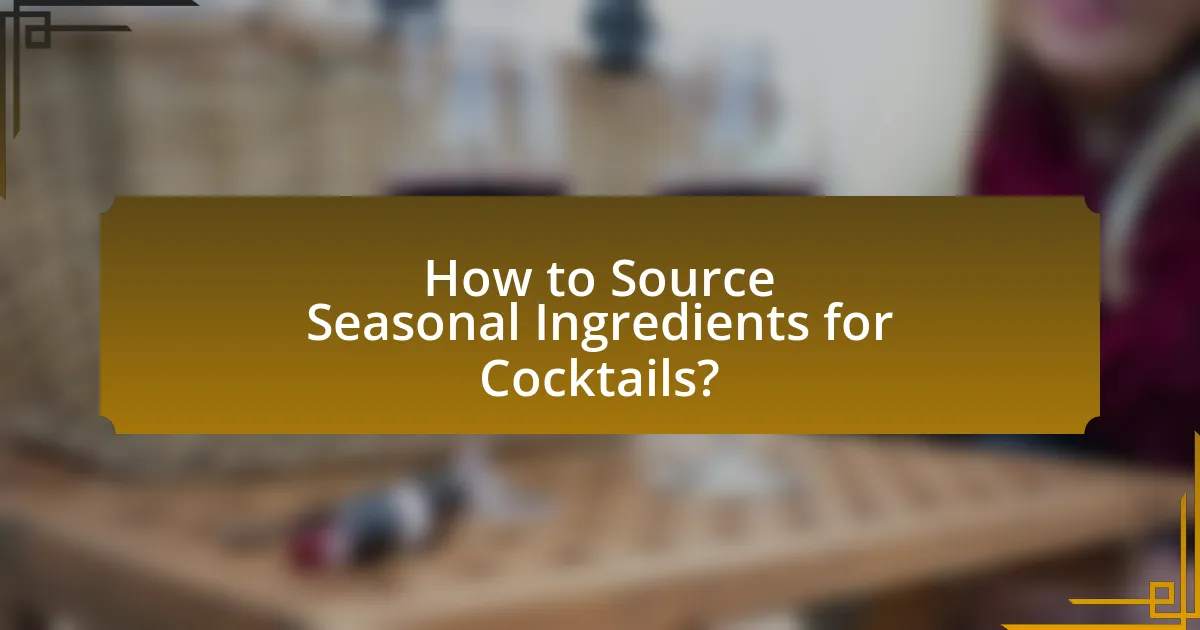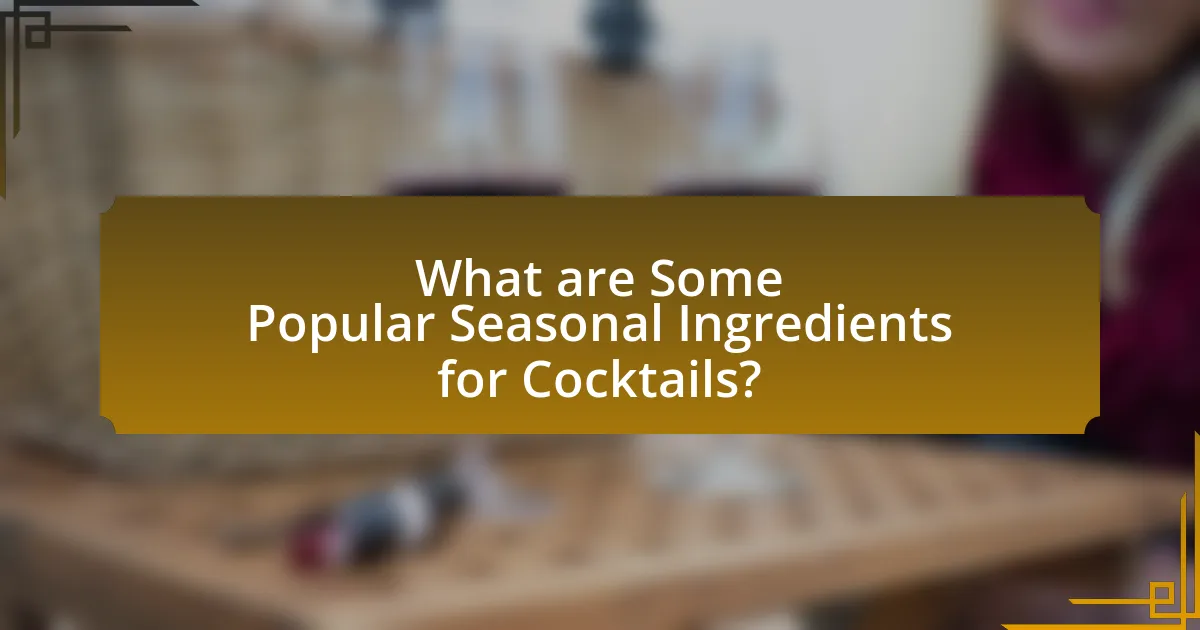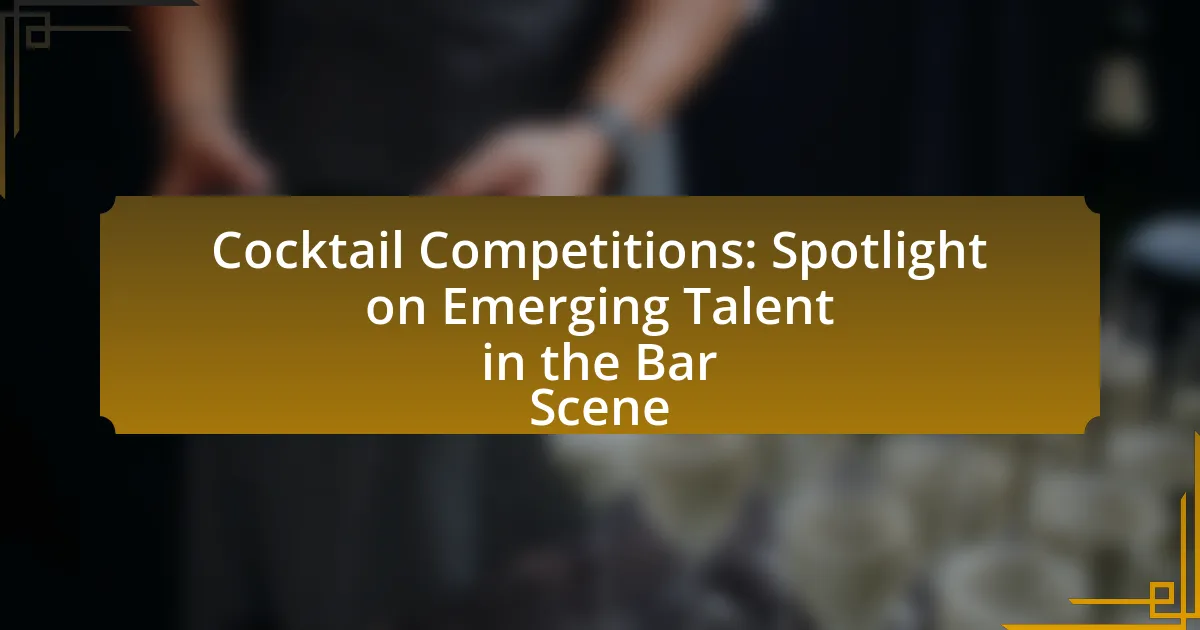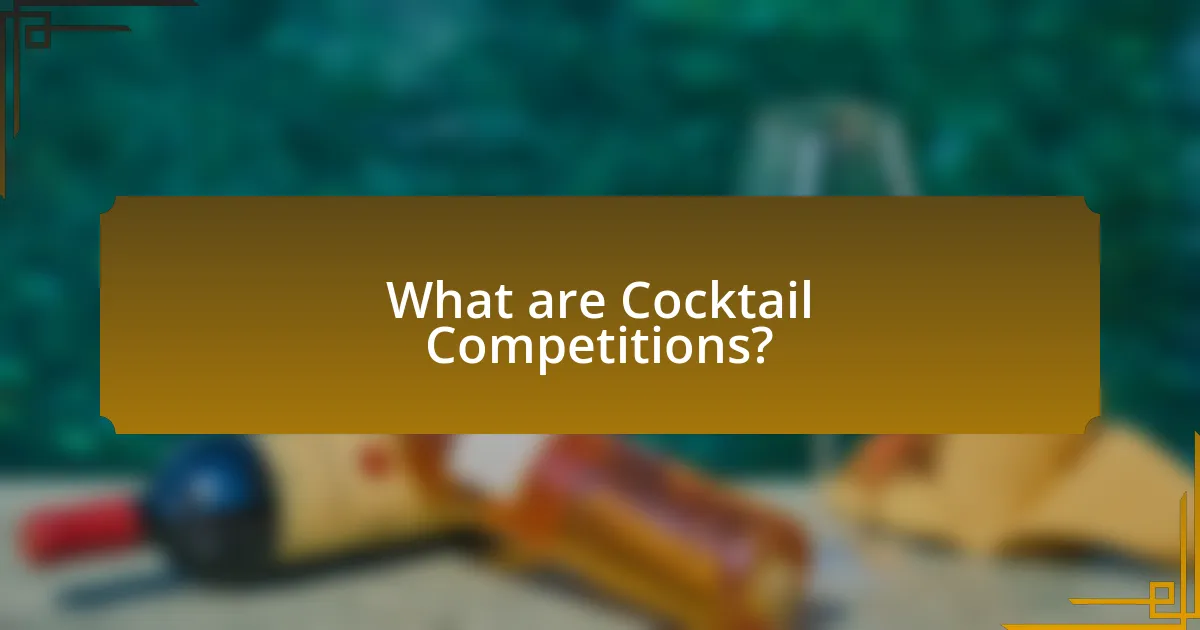The article explores the psychology behind cocktail choices, highlighting how drink selections reflect individual personality traits and social identities. It discusses various factors influencing these choices, including mood, social context, cultural background, and personal preferences. Key insights reveal that specific cocktails can signify traits such as sophistication, sociability, and openness, while social influences and environmental settings further shape preferences. Additionally, the article examines the implications of cocktail choices in professional settings and offers practical tips for selecting drinks that align with personal identity and enhance social interactions.

What is the Psychology Behind Cocktail Choices?
The psychology behind cocktail choices reveals that individuals often select drinks that reflect their personality traits and social identities. Research indicates that preferences for specific cocktails can be influenced by factors such as mood, social context, and cultural associations. For instance, a study published in the Journal of Consumer Research found that people tend to choose beverages that align with their self-image or the image they wish to project in social settings. Additionally, cocktails with vibrant colors or unique presentations may attract those seeking novelty or excitement, while classic drinks may appeal to individuals valuing tradition and sophistication. This connection between drink choice and psychological factors underscores how cocktails serve not only as refreshments but also as expressions of personal identity and social dynamics.
How do our drink choices reflect our personality traits?
Drink choices often reflect personality traits, as individuals tend to select beverages that align with their self-image and social preferences. For instance, research indicates that people who prefer bold flavors, such as whiskey or dark beers, often exhibit traits like confidence and assertiveness, while those who choose lighter drinks, like wine or cocktails, may display sociability and openness. A study published in the journal “Personality and Individual Differences” by Montoya et al. (2014) found correlations between specific drink preferences and personality dimensions, reinforcing the idea that our beverage selections can serve as a window into our psychological profiles.
What specific personality traits are associated with different cocktail preferences?
Individuals who prefer specific cocktails often exhibit distinct personality traits. For example, those who enjoy classic cocktails like martinis tend to be sophisticated, confident, and traditional, reflecting a preference for structure and elegance. In contrast, individuals who favor fruity cocktails, such as piña coladas, are often seen as sociable, carefree, and adventurous, indicating a more spontaneous and fun-loving nature.
Research published in the Journal of Personality and Social Psychology supports these associations, revealing that drink choices can reflect underlying personality dimensions. For instance, a study by M. A. D. M. de Vries and colleagues found that people who prefer bitter flavors, often found in cocktails like Negronis, are more likely to score high on traits such as openness to experience and emotional stability.
Thus, cocktail preferences can serve as a window into personality traits, with specific drinks correlating to characteristics such as sophistication, sociability, and openness.
How do social influences shape our cocktail choices?
Social influences significantly shape our cocktail choices by affecting our preferences and behaviors in social settings. Research indicates that individuals often select cocktails based on the preferences of their peers, as social conformity plays a crucial role in decision-making. For instance, a study published in the Journal of Consumer Research found that people are more likely to choose drinks that are popular among their social circles, demonstrating the impact of group dynamics on individual choices. Additionally, social media trends and influencer endorsements can further sway cocktail selections, as individuals seek to align their choices with perceived social norms and status.
Why do people gravitate towards certain types of cocktails?
People gravitate towards certain types of cocktails due to a combination of personal preferences, social influences, and psychological associations. Individual taste preferences, such as sweetness or bitterness, play a significant role in cocktail selection, as evidenced by studies showing that flavor profiles can evoke specific emotional responses. Additionally, social settings and peer influences often dictate choices, with individuals opting for popular or trendy cocktails to fit in or enhance their social experience. Psychological factors, such as the desire for status or identity expression, also contribute; for instance, choosing a sophisticated cocktail can signal refinement or social status. Research indicates that these factors collectively shape cocktail preferences, making them a reflection of personal identity and social dynamics.
What role does cultural background play in cocktail selection?
Cultural background significantly influences cocktail selection by shaping preferences for flavors, ingredients, and presentation styles. For instance, individuals from Latin American cultures may favor cocktails that incorporate tropical fruits and spices, reflecting regional agricultural practices and culinary traditions. In contrast, those from European backgrounds might prefer classic cocktails that emphasize spirits like gin or whiskey, aligning with historical drinking customs. Research indicates that cultural exposure affects taste perception and social drinking norms, further guiding individuals in their cocktail choices.
How do mood and emotions influence drink choices?
Mood and emotions significantly influence drink choices by affecting preferences for specific flavors and types of beverages. For instance, individuals experiencing happiness may opt for sweeter drinks, while those feeling sad might choose comfort beverages like hot chocolate or creamy cocktails. Research indicates that emotional states can alter taste perception; a study published in the journal “Food Quality and Preference” found that positive moods enhance the enjoyment of sweet flavors, while negative moods can lead to a preference for more bitter or complex tastes. This connection between emotional state and drink selection highlights how psychological factors shape consumer behavior in social settings.
What psychological theories explain cocktail preferences?
Psychological theories explaining cocktail preferences include the theory of planned behavior, which posits that individual intentions, influenced by attitudes, subjective norms, and perceived behavioral control, shape drinking choices. Additionally, the social identity theory suggests that people select cocktails that reflect their social groups and identities, reinforcing group membership through shared preferences. Research indicates that personality traits, as outlined in the Five Factor Model, also play a role; for instance, extroverted individuals may prefer vibrant, colorful cocktails, while introverted individuals might opt for simpler drinks. These theories collectively illustrate how psychological factors, including social influences and personality traits, guide cocktail selection.
How does the concept of self-image relate to drink choices?
Self-image significantly influences drink choices, as individuals often select beverages that reflect their perceived identity and social status. Research indicates that people tend to choose drinks that align with their self-concept; for instance, someone who views themselves as sophisticated may opt for wine or craft cocktails, while those with a more casual self-image might prefer beer or soft drinks. A study published in the Journal of Consumer Research found that drink choices can serve as a form of self-expression, where individuals use their selections to communicate their personality traits and social affiliations. This connection between self-image and drink choices underscores the psychological factors that drive consumer behavior in social settings.
What is the significance of brand loyalty in cocktail selection?
Brand loyalty significantly influences cocktail selection by guiding consumers toward familiar brands that evoke trust and satisfaction. When individuals consistently choose cocktails from specific brands, it reflects their positive past experiences and emotional connections with those brands. Research indicates that brand loyalty can enhance perceived quality and increase the likelihood of repeat purchases, as consumers often associate familiar brands with reliability and enjoyment. For instance, a study published in the Journal of Consumer Research found that brand loyalty can lead to a 20% increase in the likelihood of choosing a preferred brand over alternatives. This demonstrates that brand loyalty not only shapes individual preferences but also impacts overall market trends in cocktail consumption.
How can understanding cocktail choices enhance social interactions?
Understanding cocktail choices can enhance social interactions by providing insights into individuals’ personalities and preferences. For instance, research indicates that people often select cocktails that reflect their social identity, which can facilitate connections based on shared tastes or experiences. A study published in the Journal of Consumer Research found that individuals who order similar drinks are more likely to perceive each other positively, fostering rapport and conversation. This understanding allows individuals to navigate social settings more effectively, as recognizing drink choices can serve as conversation starters and help establish common ground among participants.
What are the implications of cocktail choices in professional settings?
Cocktail choices in professional settings can significantly influence perceptions of professionalism, social status, and personal branding. For instance, selecting a classic cocktail like a martini may convey sophistication and confidence, while opting for a trendy drink could suggest a modern, adventurous personality. Research indicates that drink choices can affect how individuals are perceived in terms of competence and likability; a study published in the Journal of Consumer Research found that people often make judgments about others based on their beverage selections, associating certain drinks with specific personality traits. Therefore, the implications of cocktail choices extend beyond mere preference, impacting networking opportunities and professional relationships.
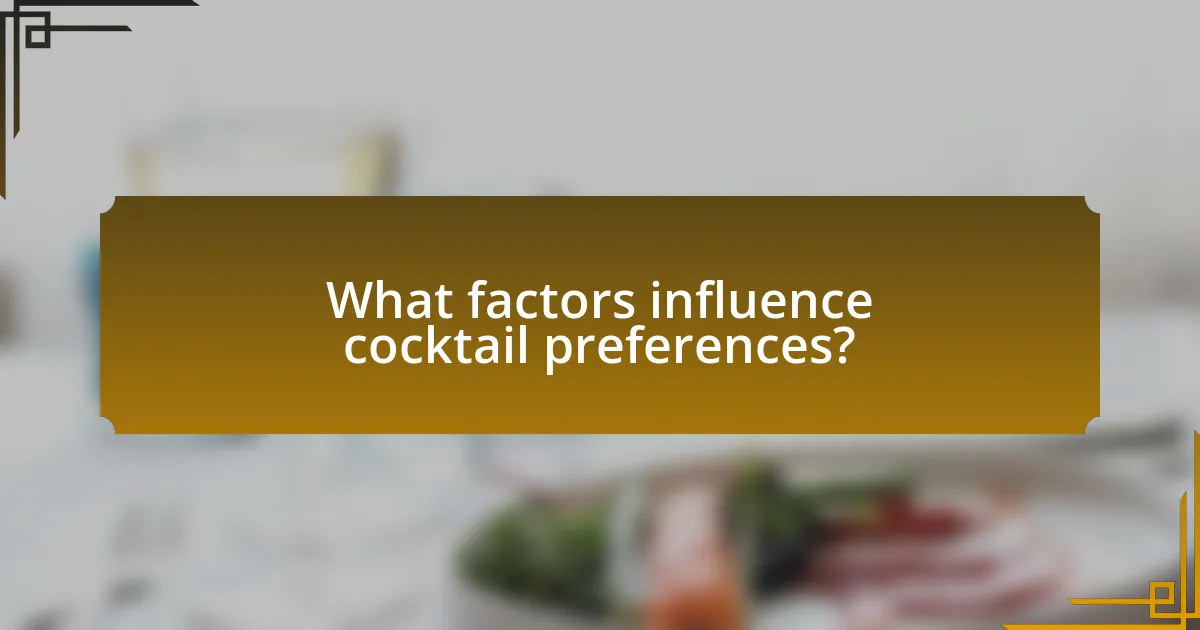
What factors influence cocktail preferences?
Cocktail preferences are influenced by several key factors, including personal taste, cultural background, social context, and mood. Personal taste dictates individual flavor profiles, with some people preferring sweet cocktails while others favor bitter or sour options. Cultural background plays a significant role, as different regions have distinct traditional cocktails that reflect local ingredients and customs. Social context, such as the setting of a gathering or the company present, can also affect choices, as individuals may opt for more sophisticated drinks in formal settings or lighter options in casual environments. Lastly, mood influences preferences; for instance, someone feeling celebratory may choose a vibrant, colorful cocktail, while a person seeking comfort might prefer a classic drink. These factors collectively shape the diverse landscape of cocktail preferences.
How does the environment affect drink choices?
The environment significantly influences drink choices by shaping social norms, availability, and sensory experiences. For instance, settings such as bars or restaurants often promote specific types of beverages, leading patrons to select drinks that align with the ambiance and social expectations. Research indicates that environmental factors, including lighting, music, and decor, can alter perceptions of taste and preference, encouraging individuals to choose cocktails that match the mood of the setting. A study published in the Journal of Consumer Research found that ambient factors can enhance the enjoyment of certain drinks, thus affecting overall consumption patterns.
What impact does the setting (bar, home, event) have on cocktail selection?
The setting significantly influences cocktail selection, as different environments evoke distinct social norms and preferences. In bars, patrons often opt for trendy or signature cocktails that reflect the establishment’s brand and ambiance, while at home, individuals may choose simpler, more personal recipes that cater to their tastes or the preferences of their guests. During events, cocktail choices are typically curated to align with the occasion’s theme, formality, and guest demographics, often featuring a mix of classic and innovative drinks to appeal to a diverse audience. This behavior is supported by research indicating that social contexts shape drinking choices, with studies showing that people are more likely to experiment with new flavors in social settings compared to private ones.
How do seasonal trends influence cocktail preferences?
Seasonal trends significantly influence cocktail preferences by altering the types of ingredients and flavors that consumers seek. During warmer months, people tend to prefer refreshing cocktails featuring citrus, herbs, and lighter spirits, such as mojitos and gin and tonics, which align with the desire for cooling beverages. Conversely, in colder months, preferences shift towards richer, warming cocktails that incorporate spices, dark spirits, and comforting flavors, such as hot toddies and spiced rum drinks. This shift is supported by market research indicating that cocktail sales fluctuate seasonally, with lighter cocktails dominating summer sales and heavier, spiced options increasing in winter.
What role does age and gender play in cocktail choices?
Age and gender significantly influence cocktail choices, with younger individuals often favoring sweeter, fruit-based cocktails, while older adults tend to prefer classic, spirit-forward drinks. Research indicates that women are more likely to choose lighter, sweeter cocktails, such as mojitos or cosmopolitans, whereas men often opt for stronger options like whiskey or martinis. A study published in the Journal of Consumer Research found that age-related preferences are linked to social and cultural factors, where younger drinkers seek novelty and social acceptance, while older drinkers prioritize tradition and quality. This demonstrates that both age and gender shape not only individual preferences but also broader drinking trends within social contexts.
How do age demographics influence preferred cocktail types?
Age demographics significantly influence preferred cocktail types, with younger consumers often favoring sweeter, fruit-based cocktails, while older individuals tend to prefer classic, spirit-forward drinks. Research indicates that millennials and Gen Z are drawn to vibrant, visually appealing cocktails, such as mojitos and flavored margaritas, reflecting their preference for social media-friendly beverages. In contrast, Generation X and baby boomers typically gravitate towards traditional cocktails like martinis and old fashioneds, which emphasize quality and craftsmanship. This trend is supported by a study from the Beverage Information Group, which found that 60% of younger drinkers prefer cocktails with innovative flavors, while older demographics prioritize classic recipes, highlighting the impact of age on cocktail preferences.
What differences exist between male and female cocktail preferences?
Male and female cocktail preferences differ significantly, with men typically favoring stronger, spirit-forward drinks, while women often prefer sweeter, fruit-based cocktails. Research indicates that men are more likely to choose drinks like whiskey or martinis, reflecting a preference for bold flavors and higher alcohol content. In contrast, women tend to gravitate towards cocktails such as mojitos or cosmopolitans, which are characterized by lighter, sweeter profiles. A study published in the Journal of Consumer Research by authors such as Kahn and Wansink highlights these trends, showing that social and cultural factors influence these preferences, with women often associating sweeter drinks with socializing and enjoyment.
How do flavor profiles affect cocktail selection?
Flavor profiles significantly influence cocktail selection by guiding consumers toward drinks that align with their taste preferences and emotional states. For instance, individuals who prefer sweet flavors may gravitate towards cocktails like mojitos or piña coladas, while those who enjoy bitter or herbal notes might choose an Old Fashioned or Negroni. Research indicates that flavor preferences are often linked to personality traits; for example, extroverted individuals may favor sweeter, fruitier cocktails, reflecting their sociable nature, while introverted individuals might opt for more complex, bitter flavors, indicating a preference for depth and nuance. This connection between flavor profiles and personal identity underscores how cocktail choices can serve as a reflection of one’s personality and mood.
What are the most popular flavor profiles in cocktails?
The most popular flavor profiles in cocktails include sweet, sour, bitter, and savory. Sweet cocktails often feature ingredients like fruit juices and syrups, appealing to those who enjoy dessert-like flavors. Sour profiles, characterized by citrus elements such as lemon or lime, provide a refreshing contrast and are favored for their balance. Bitter cocktails, which incorporate ingredients like bitters or herbal liqueurs, attract those who appreciate complex and sophisticated tastes. Savory cocktails, utilizing ingredients like herbs and spices, cater to adventurous drinkers seeking unique flavor experiences. These profiles reflect consumer preferences and trends in cocktail culture, demonstrating how flavor choices can indicate personality traits and social behaviors.
How do taste preferences correlate with personality types?
Taste preferences correlate with personality types through specific patterns that link flavor choices to traits. Research indicates that individuals who prefer sweet flavors often exhibit traits such as agreeableness and sociability, while those who favor bitter tastes may display higher levels of openness and a tendency towards risk-taking. A study published in the journal “Personality and Individual Differences” by Zsuzsanna K. Szabo and colleagues found that people who enjoy spicy foods tend to be more extroverted and adventurous. This correlation suggests that taste preferences can serve as indicators of underlying personality characteristics, providing insights into social behaviors and individual differences.

What insights can we gain from analyzing cocktail choices?
Analyzing cocktail choices provides insights into individual personality traits and social behaviors. Research indicates that preferences for specific cocktails can reflect characteristics such as extroversion, openness to experience, and even risk-taking tendencies. For example, individuals who prefer sweet cocktails may be perceived as more sociable and approachable, while those who choose stronger, more bitter drinks might be seen as more adventurous or independent. Additionally, studies have shown that cocktail choices can be influenced by cultural background and social context, revealing how environment and peer influence shape drinking preferences. This understanding can aid in marketing strategies and social interactions, as recognizing these patterns allows for tailored experiences that resonate with specific demographics.
How can understanding cocktail choices improve marketing strategies?
Understanding cocktail choices can significantly enhance marketing strategies by allowing brands to tailor their offerings to consumer preferences and behaviors. By analyzing the types of cocktails that resonate with specific demographics, marketers can create targeted campaigns that align with the lifestyle and identity of their audience. For instance, research indicates that consumers often choose cocktails that reflect their personality traits; a study published in the Journal of Consumer Research found that individuals who prefer sweeter cocktails tend to be more extroverted, while those who favor bitter drinks often exhibit more introverted characteristics. This insight enables marketers to craft messages and promotions that appeal directly to these personality types, thereby increasing engagement and sales.
What trends are emerging in cocktail preferences among consumers?
Emerging trends in cocktail preferences among consumers include a growing interest in low-alcohol and non-alcoholic options, as well as a focus on sustainability and locally sourced ingredients. Research indicates that 27% of consumers are actively seeking low-alcohol cocktails, reflecting a shift towards healthier drinking habits. Additionally, the use of organic and locally sourced ingredients has increased, with 60% of consumers expressing a preference for cocktails made from sustainable sources. This trend highlights a broader consumer awareness of health and environmental impacts associated with beverage choices.
How can businesses leverage psychological insights for product development?
Businesses can leverage psychological insights for product development by understanding consumer behavior and preferences, which can guide the design and marketing of products. For instance, research indicates that emotional responses significantly influence purchasing decisions; therefore, businesses can create products that evoke specific feelings, such as nostalgia or excitement, to enhance appeal. Additionally, insights from behavioral psychology, such as the impact of social proof and scarcity, can inform strategies that increase perceived value and urgency, leading to higher sales. By analyzing consumer feedback and preferences through surveys and focus groups, companies can refine their offerings to better align with psychological triggers, ultimately resulting in more successful product launches.
What practical tips can enhance your cocktail experience?
To enhance your cocktail experience, focus on using high-quality ingredients, as they significantly impact flavor and overall enjoyment. Freshly squeezed juices, premium spirits, and artisanal mixers elevate the taste and complexity of cocktails. Research indicates that the quality of ingredients directly correlates with consumer satisfaction in beverage choices, highlighting the importance of using the best available options. Additionally, experimenting with garnishes and presentation can enhance the visual appeal and sensory experience, making the cocktail more enjoyable.
How can you choose cocktails that reflect your personality?
To choose cocktails that reflect your personality, first identify your personal traits and preferences, such as adventurousness, sophistication, or playfulness. For example, if you are adventurous, you might opt for unique cocktails with exotic ingredients, while a sophisticated personality may lean towards classic drinks like a martini. Research indicates that individuals often select beverages that align with their self-image and social identity, suggesting that your drink choice can serve as a form of self-expression. Therefore, understanding your personality traits can guide you in selecting cocktails that resonate with who you are.
What are some best practices for selecting cocktails in social settings?
To select cocktails effectively in social settings, consider the preferences of the group and the context of the event. Understanding the tastes of your companions can guide you toward options that will be well-received, enhancing the social experience. For instance, if the gathering is casual, lighter cocktails like mojitos or spritzers may be more appropriate, while a formal event might call for classic cocktails such as martinis or old fashioneds. Additionally, being aware of the venue’s specialty cocktails can also inform your choice, as these drinks are often crafted to complement the atmosphere and theme of the location. Research indicates that drink choices can reflect personality traits; for example, individuals who prefer sweeter cocktails may be perceived as more sociable and approachable. Thus, aligning your cocktail selection with both personal taste and social dynamics can foster better interactions and enjoyment.

